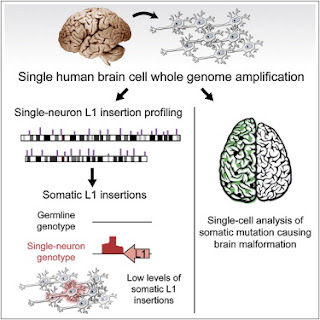We are close to the end of 2012 and it's time to make a summary of the success and achievements of the year.
A good starting point is this
summary from GenomeWeb, that underlines how 2012 has been "a good year for genomics": ENCODE project milestones, several large sequencing projects started, papers from 1000G and ESP shedding new light on human genetic variability, new genomic techniques for non-invasive prenatal screening, rapid spread of genetic tests and new developments in personalized medicine and cancer treatments.


Forbes has published its usual
"30 under 30" list of young scientists that have made a critical impact in their field. Concerning
science and health there are several inspiring stories: UCLA's Christina Agapakis, who works on synthetic biology; Immumetrix's Christina Fan, who focuses on prenatal genetic testing; and Caltech's Mitchell Guttman, who helped uncover lincRNAs; Isaac Kinde at Johns Hopkins School of Medicine, who is working to improve the accuracy of DNA sequencing technology; and Adina Mangubat at Spiral Genetics, who is offering a cloud-based solution to manage DNA sequencing data.
These stories fascinate me every year, particularly now that I'm approaching my thirties. They represent a powerful source of inspiration, something that would push everyone to work harder and think out of the box!

I will report here a few examples:
- Jun Wang, the head of the BGI sequencing powerhouse. The incredible productive efficiency of BGI has moved huge projects on human and other life forms variability from imagination to actual reality. The Center is taking a leading role in sequencing 10,000 vertebrates through the Genome 10K project; 5,000 insects and other arthropods through the i5k initiative; and more than 1,000 birds, including some extinct ones in a separate project. Moreover BGI has launched the Million Project, aimed to expand the sequenced samples to 1M for human, animals, plants and bacteria. This would increase out knowledge about life on earth, how it works and how it has developed.
- Cedric Blanpain has used single cell sequencing to track down the evolution of single tumor cells, discovering that they descend clonally from different progenitor cells (some kind of tumor stem cells) in the tumor mass. This also implies that a tumor mass is composed by different cells populations with peculiar properties and different response to therapies.
- Elizabeth Iorns, who has focused her attention on reproducibility of results published in scientific papers. With the number of frauds and retractions increasing in the last 3 years, also as a drawback of fund cuts and consequent higher pressure for publication, the transparency of paper and new methods of quality checking are topics to care about. With this in mind Iorns founded the Reproducibility Initiative, based in Palo Alto, California, which allows authors to submit their papers for replication.
- Bernardo de Bernardinis, which in 2009 was deputy head of the Italian Department of Civil Protection and involved in the recent trial for missing communication and inadequate assessment of seismic risk for the earthquake disaster in Aquila. The trial has assumed an international relevance mainly because it suggests direct responsibility for the scientific committee called to evaluate the actual seismic risk for the city.

In the USA it's time to assign the
National Medal of Science and the National Medal of Technology and Innovation. The recipients will receive their awards at a White House ceremony in early 2013.
“I am proud to honor these inspiring American innovators,” President Obama said. “They represent the ingenuity and imagination that has long made this Nation great—and they remind us of the enormous impact a few good ideas can have when these creative qualities are unleashed in an entrepreneurial environment.”.
Here is the list for the National Medal of Science:
Dr. Allen Bard, University of Texas at Austin, TX. Investigations in electro-organic chemistry, photoelectrochemistry, electrogenerated chemiluminescence, and electroanalytical chemistry
Dr. Sallie Chisholm, Massachusetts Institute of Technology, MA. Marine ecology.
Dr. Sidney Drell, Stanford University, CA.
Dr. Sandra Faber, University of California, Santa Cruz, CA.
Formation and evolution of galaxies and the evolution of structure in the universe.
Dr. Sylvester James Gates, University of Maryland, MD. Supersymmetry theory.
Dr. Solomon Golomb, University of Southern California, CA
Dr. John Goodenough, University of Texas at Austin, TX. Relationships between the chemistry, structure and electrical properties of solids in order to design new or improved technical materials.
D
r. M. Frederick Hawthorne, University of Missouri, MO. International Institute of Nano and Molecular Medicine.
Dr. Leroy Hood, Institute for Systems Biology, WA. Integrating biology, technology and computation to create a predictive, personalized, preventive and participatory approach to medicine.
Dr. Barry Mazur, Harvard University, MA. Number theory, Automorphic forms, and related issues in algebraic geometry.
Dr. Lucy Shapiro, Stanford University School of Medicine, CA. Mechanisms used to generate the three-dimensional organization of a cell from a one-dimensional genetic code; define these mechanisms using both molecular genetics and biochemistry.
Dr. Anne Treisman, Princeton University, NJ. Visual attention, object perception and memory. Explore the nature of the limits to human perception, the information-processing that results in the perception of objects and events.





























